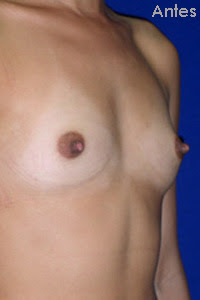Cosmetic and Plastic Surgery in Lima Peru Clinic Arroyo Goldstein



How do we limit the risk of complications in Surgeries.
Our procedures and protocols have been in place, and used without question for almost 30 years. Some people might think that our measures are extreme, however that is why our clinic can boast about our success rate. It is not inconvenient to do Liposuction in several sessions over alternating days, it should always be the rule. Many Doctors and clinics are just too eager to take a patients money, and only tell them what they want to hear, or let the patients make their own decisions based on their personal schedules. That will only lead to problems, and sometimes dire consequences.
Safety of the patient is our first priority, that is why we do not accept all patients for surgery. If a patient is at risk, first an assessment will be done with a Doctor who specializes in that particular area( such as a Cardiologist for a heart related condition, etc) If all is approved, surgery will be done in accordance to any specialized instructions.
The greatest risks of liposuction are associated with the tendency of some surgeons to do too much surgery on the same day. The three types of excessive surgery include 1) removal of an excessive volume of fat by liposuction on a single day, 2) liposuction of an excessive number of body areas on the same day, 3) combination of liposuction and other unrelated surgical procedures which involves excessive surgical trauma and prolonged exposure to general anesthesia.
For those reasons as stated above, Only local anesthesia will be used, no more than 4 flasks of lidocaine or other anesthetic will be used at one time, no combination of surgeries will be done on the same day, Liposuction will be limited to particular zones.
A moment about local anesthesia and the safety of Tumescent Liposuction.
Lidocaine is the safest of local anesthetics available for liposuction. At lidocaine concentrations in the blood exceeding 6 milligrams/liter, patients might experience some toxicity. Blood concentrations of lidocaine in excess of 12 milligrams/liter can produce serious cardiac toxicity. The maximum recommended dosage of lidocaine for tumescent liposuction is 50 mg/kg (50 milligrams/kilogram of patient weight). The most extraordinary aspect of the tumescent technique is its unprecedented safety record when used as directed. Most liposuction surgeons know that it can be dangerous to give a patient a dosage of tumescent lidocaine that exceeds 50 mg/kg. All liposuction-related deaths have been associated with either the use of general anesthesia, or IV sedation, or lidocaine doses in far in excess of 75 mg/kg. The tumescent technique is dangerous in the hands of surgeons or anesthesiologists who have not had specific training in the technique. There has never been a reported death associated with tumescent liposuction totally by local anesthesia.
Preventing complications should be the most important concern of both patients and liposuction surgeons. Surgeons can reduce the risk of liposuction complications by proper selection of patients. Surgeons should avoid patients who have 1) unrealistic medical expectations, 2) a history of significant medical problems. Patients can reduce the risk of complications by 1) resisting the temptation to save time by attempting to do multiple unrelated surgical procedures along with liposuction, and 2) resisting the temptation to maximize the volume of fat removed on a single day. It is much safer to divide one very large liposuction procedure into two or more separate procedures done on separate days. Liposuction by general anesthesia can be considered safe, however, liposuction totally by local anesthesia is safe.
Please feel free to schedule an appointment and consult directly with us.
www.clinicasarroyoperu.com


Comments
Post a Comment